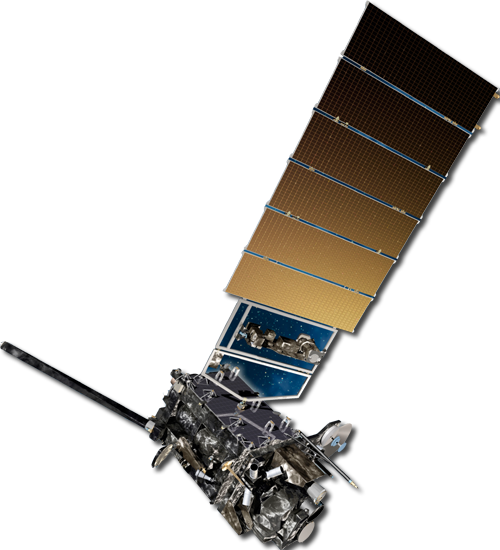Weather Satellites and Orbits

Polar Orbit

Polar orbiting satellites travel in a circular orbit moving from pole to pole.
These satellites collect data in a swath beneath them as the earth rotates on its axis.
In this way, a polar orbiting satellite can “see” the entire planet twice
in a 24 hour period. The basic operational mode deploys two polar orbiting satellites
continuously, one passing north to south (descending) and the other passing south to
north (ascending), circling the earth every 12 hours.
Polar Orbiting Satellites are inserted into sun-synchronous orbits which place the
spacecraft in a relatively constant relationship to the sun so that the ascending node
will remain at a constant solar time, permitting images and data to be received by
direct broadcast at the same time each day.
This video shows how polar-orbitting satellites collect data.
Polar Operational Environmetal Satellites (POES) are significantly
closer to Earth than GOES, orbiting at an altitude of only 879 kilometers, (approximately
500 miles) so it only takes one hour and 42 minutes to complete a full orbit. This
proximity results in high resolution images and informative profiles of Earth's atmosphere.
In a little bit we'll look at some sample images from the two different satellite orbits.
But first let's move on to learning about the satellite instruments that provide us
with the data for these images.
| 4 / 11 |





